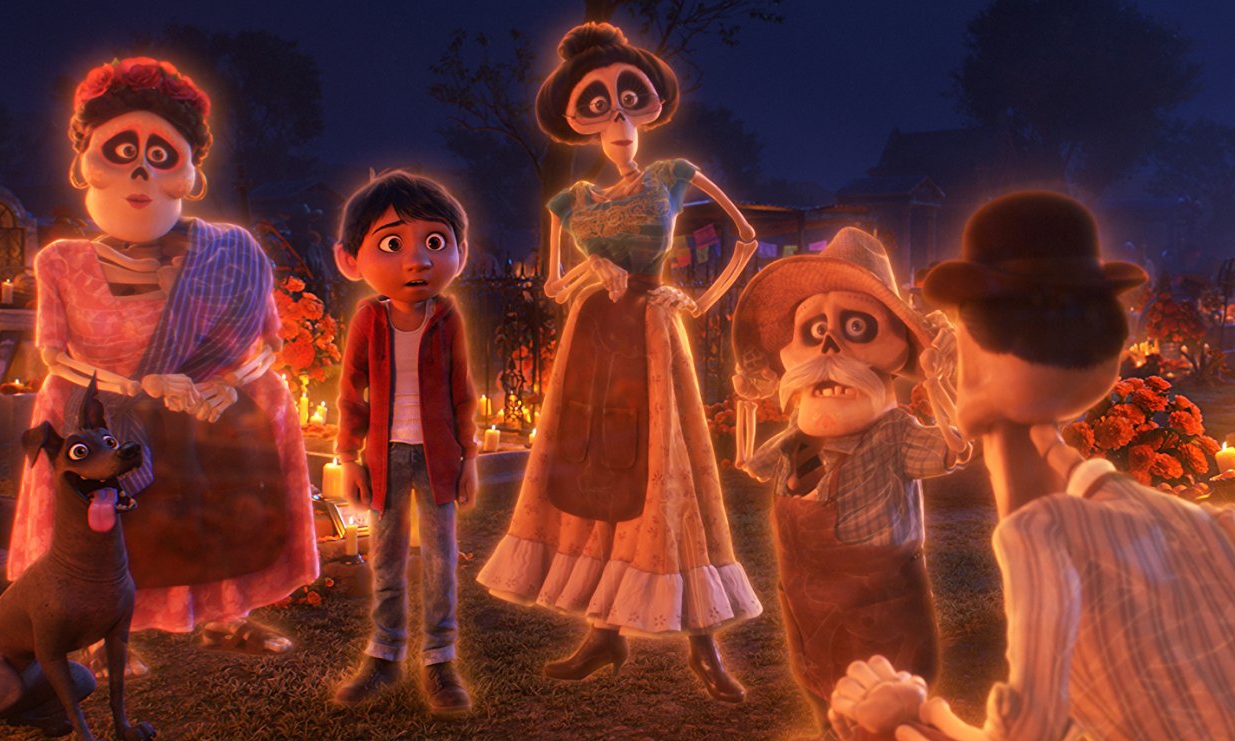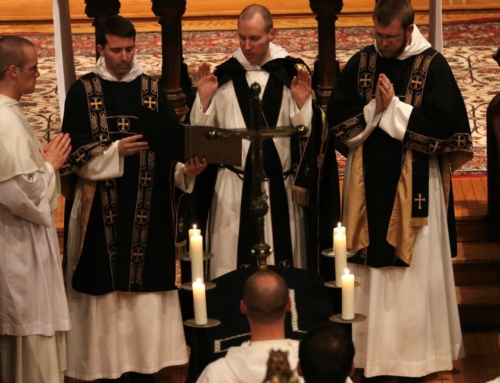A few of us recently watched Pixar’s Coco. I found it very enjoyable, although tinged with sadness—which I think was the director’s intent. The story makes excellent use of its medium, animation which is beautiful and imaginative. There’s a strong family theme as well, something that’s too often neglected in film. The movie is primarily focused, though, on our experiences of memory and death, which are poignantly combined in the recurring theme song, “Remember Me.” (Note: minor spoilers follow.)
On one level, the story is about the forgetfulness of death, about our concern to be remembered after we’ve been laid in the grave. This is certainly a worthy theme, but one that’s perhaps not really fitting for the film’s deep Hispanic roots. Ever since Our Lady of Guadalupe’s intervention, the cultures of Latin America have been deeply Christian. However, the Christian understanding of life beyond the grave is tied not to fallible human memory, as in Coco, but to God’s unfailing love.
It’s important to consider the genre of the film, though, before we draw any final conclusions. Coco takes place mostly in a fantastical otherworld, the land of the dead. Any work of fantasy borrows elements of the real world and rearranges them in a new and surprising way, the goal being to draw our attention to some aspect of our experience that we might otherwise miss.
The fantastic is particularly clear in the art design of Coco. It’s in the land of the dead that the animators really put their artistic skills and vivid imaginations to work, but their creations always remain recognizable precisely because they’re rooted in our everyday experience. For example, we can comprehend a dog with wings not because we’ve seen one before, but because we know what both dogs and wings are.
This kind of fantasy mixing goes on in the narrative as well. Coco’s version of the land of the dead combines death and memory such that being forgotten becomes a kind of death. Again, we know what both death and memory are, so we’re able to understand this, even if it’s not actually how the afterlife works.
So what is this work of fantasy trying to remind us of? One goal of Coco, I think, is to draw our attention to the experience of those who are lonely. All too many of our brothers and sisters feel that they’ve been forgotten, that they are unloved and worthless—that they’re dead to the world, in other words. Such persons are not always physically hidden, and we may even talk to them on a daily basis, but there is more to true human contact than this. It’s very possible to be utterly lonely in the busiest of hospitals, for example. This is where the element of sadness in Coco really enters in: being forgotten weighs heavily on the characters and on us, the viewers.
To be loved, to be remembered, requires that others take the time to know us as we truly are, and that we be bold enough to reveal ourselves to them. This dynamic is precisely what Coco’s fantastical land of the dead can recall to us. It’s present on the literal level, too, as beautifully portrayed in the developing relationship between Coco and Miguel. Miguel has to learn to slow down, step aside from his own plans, and understand the truth of his family’s history. Having gained this experience, he is able to approach his Mamá Coco in a way that speaks to her true self, by song rather than by the childish games he includes her in at the beginning of the movie. Coco is then moved to reveal her father’s letters and photograph, and in so doing she also reveals part of herself.
We know, of course, that God always loves us, so we are never truly alone. Sometimes God allows us to experience His presence directly, often in prayer. Usually, though, He prefers to elevate us to the dignity of acting as His messengers in the world. Through its beautiful story and artwork, Coco can help us remember to take the time to care for the lonely people in our lives, starting with our own families.
✠







